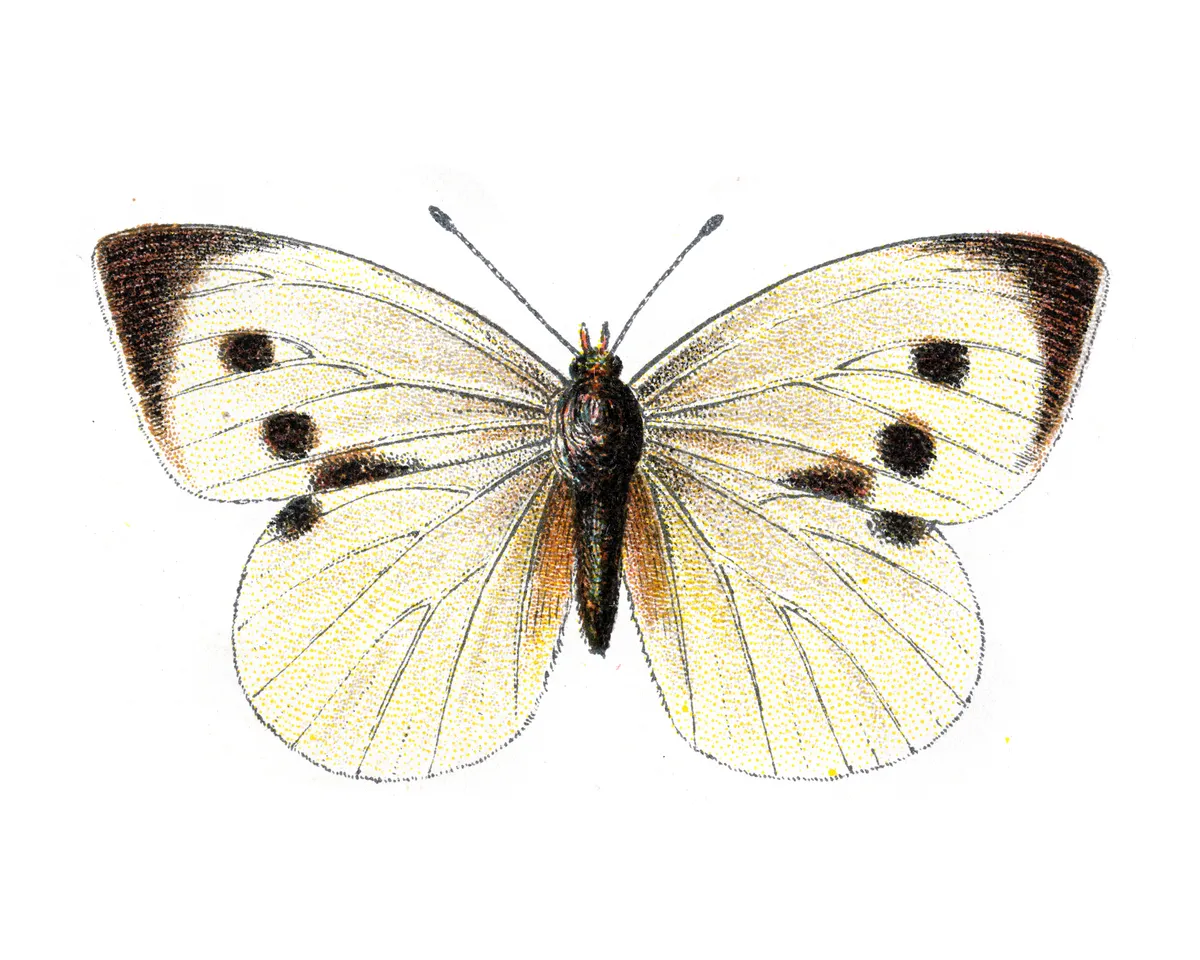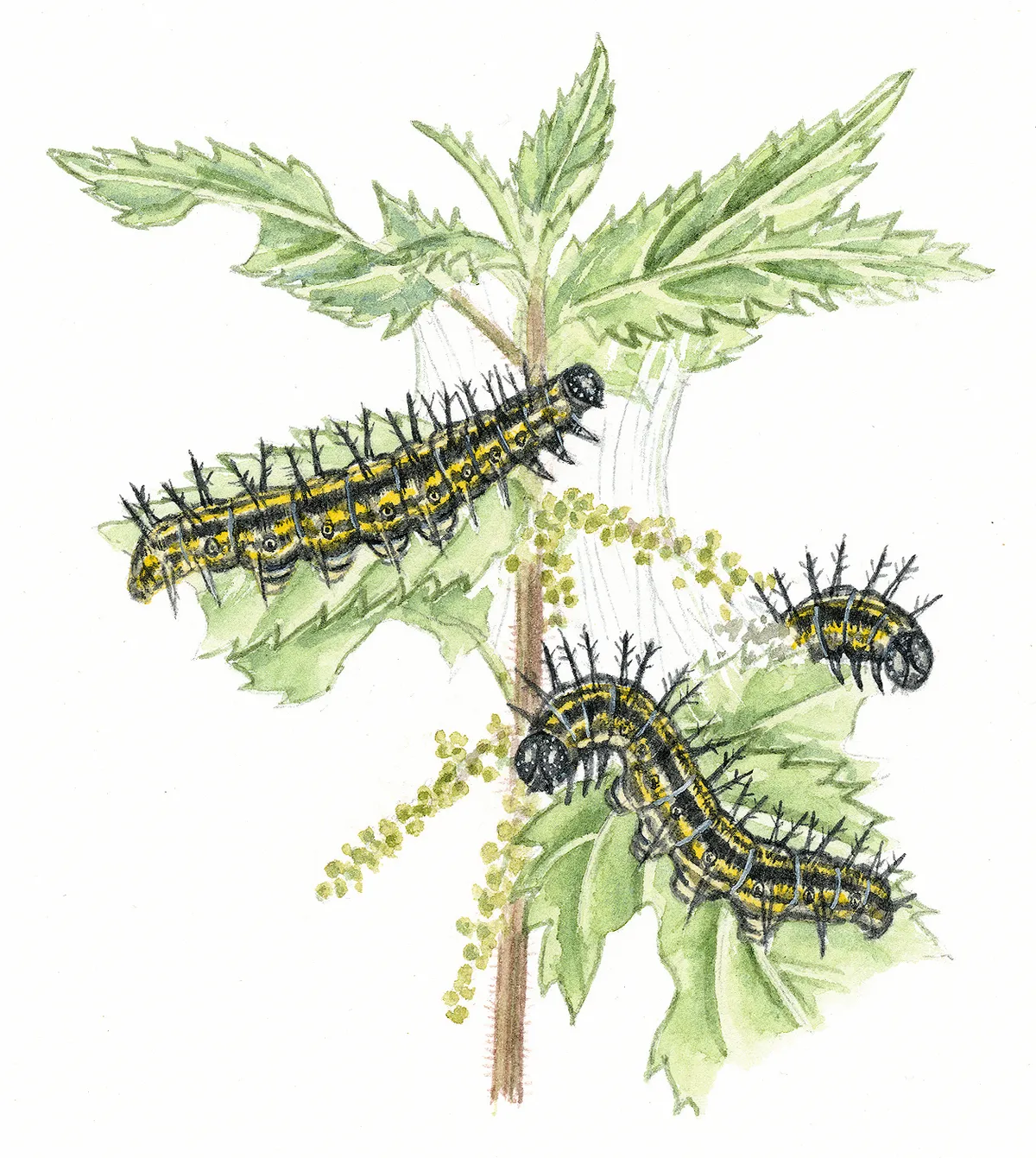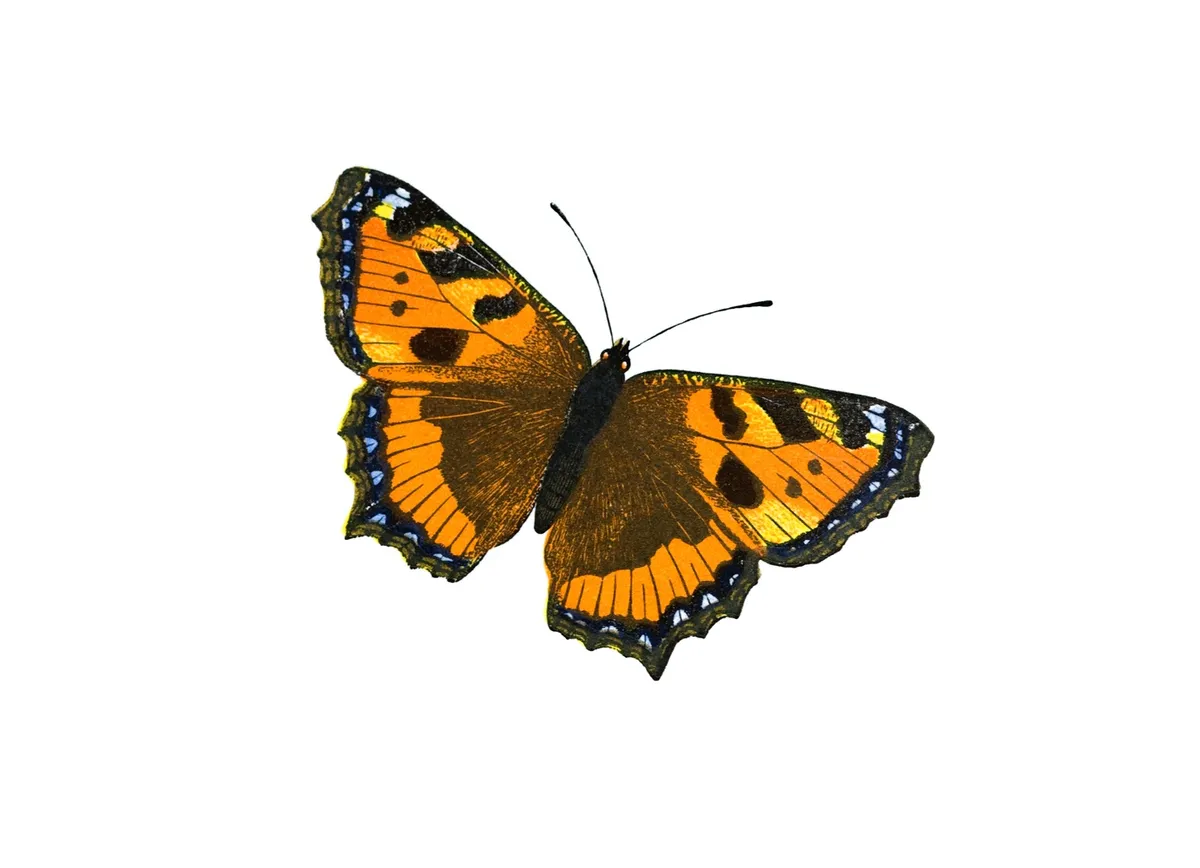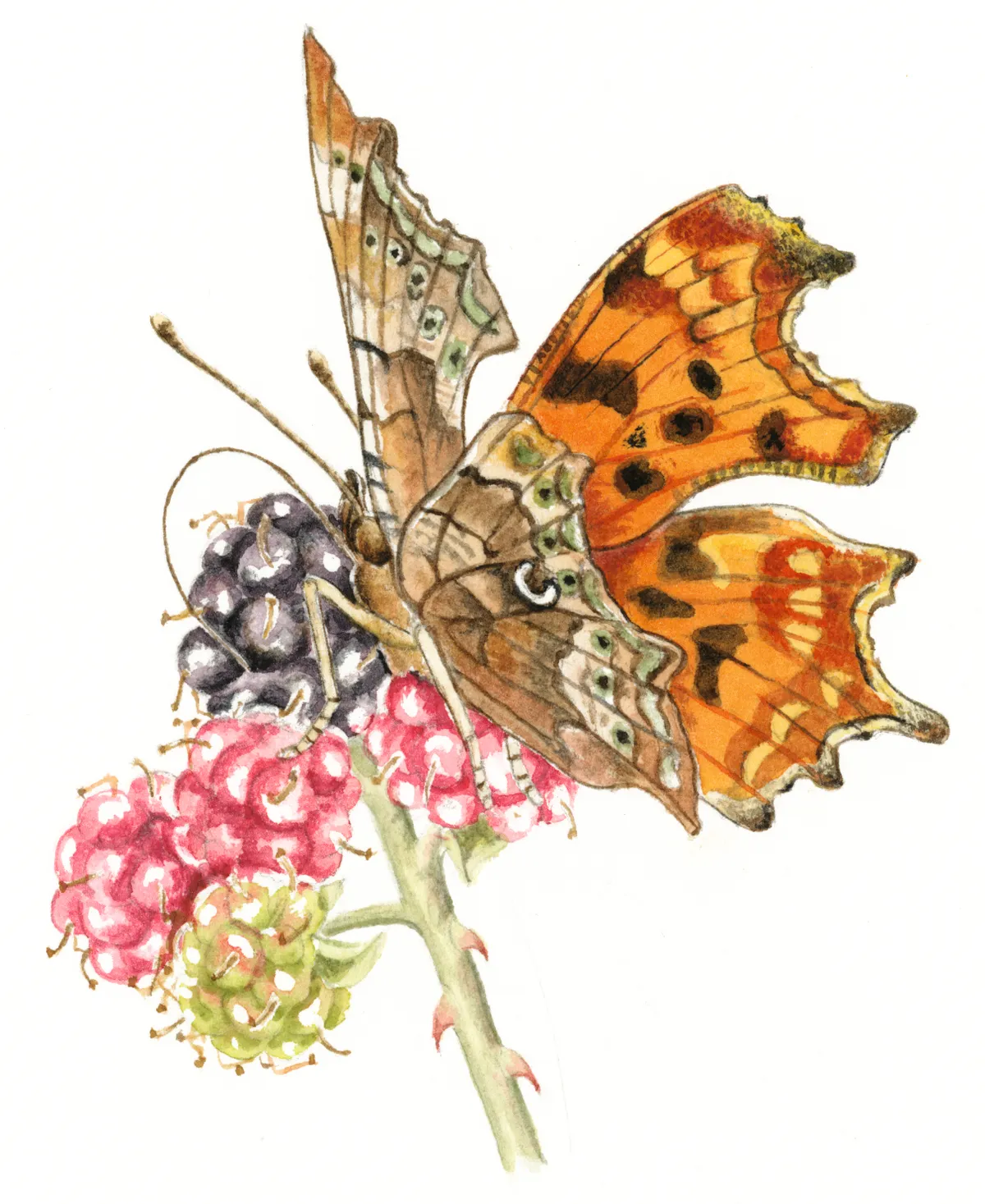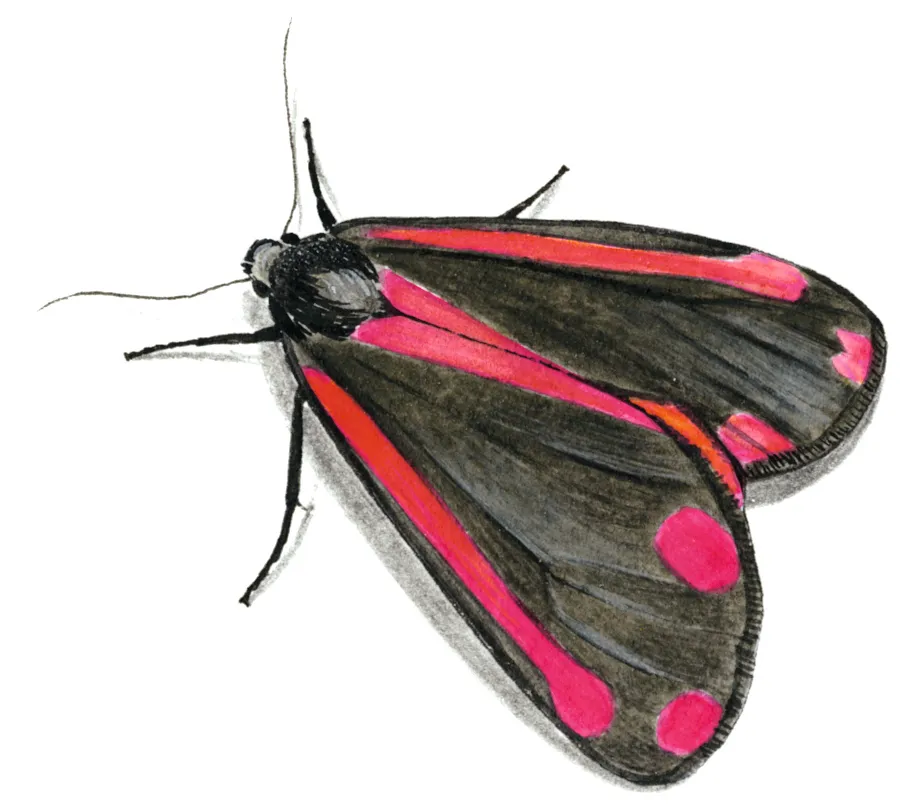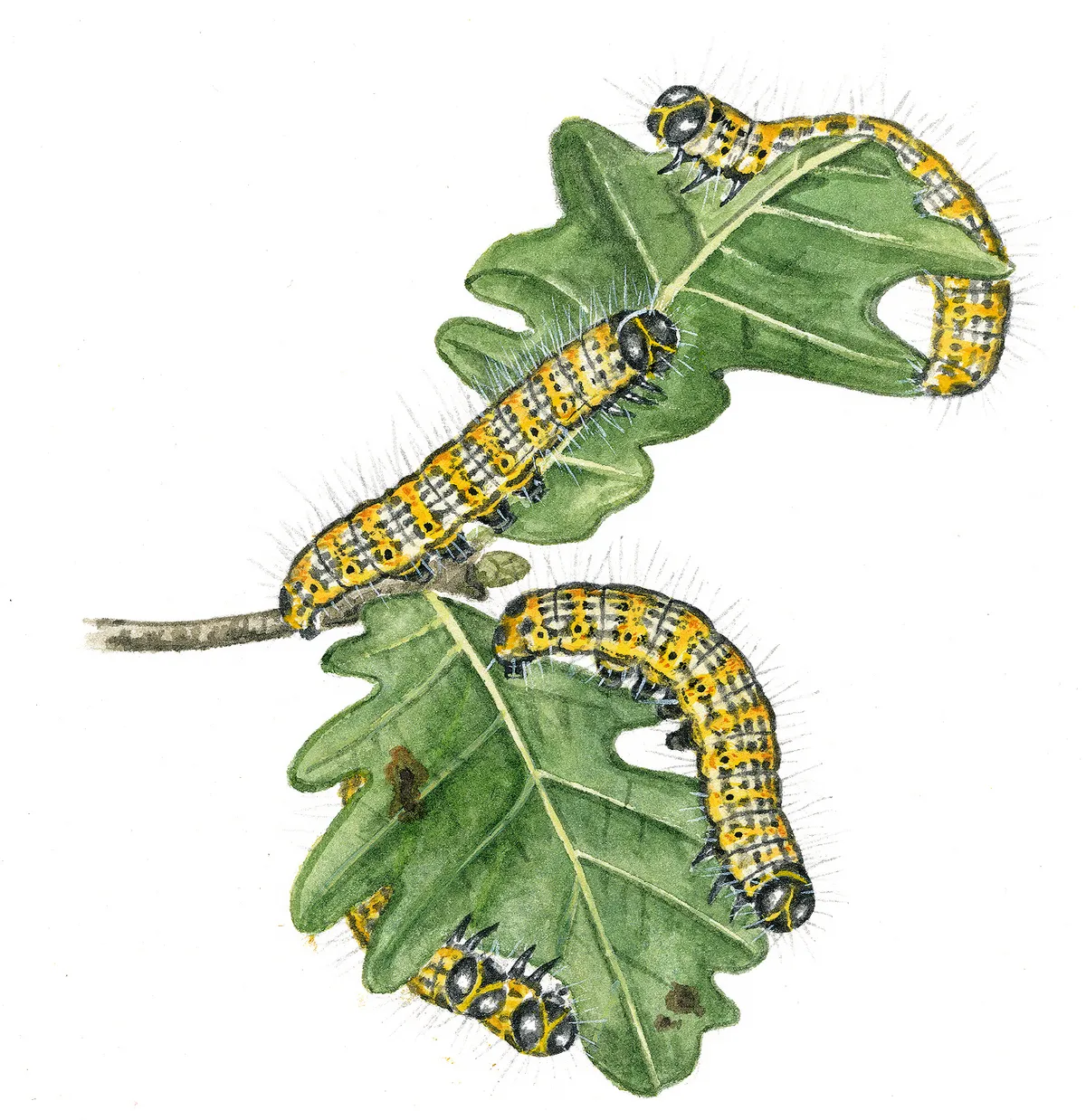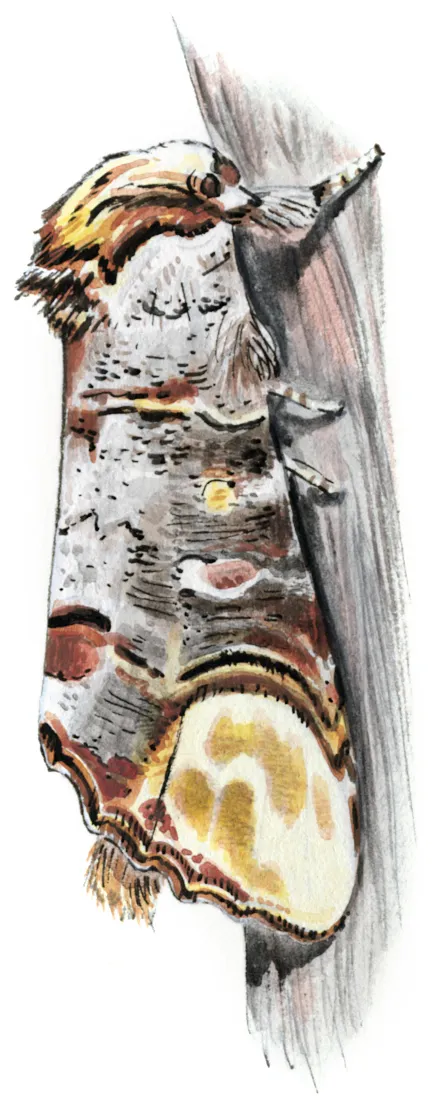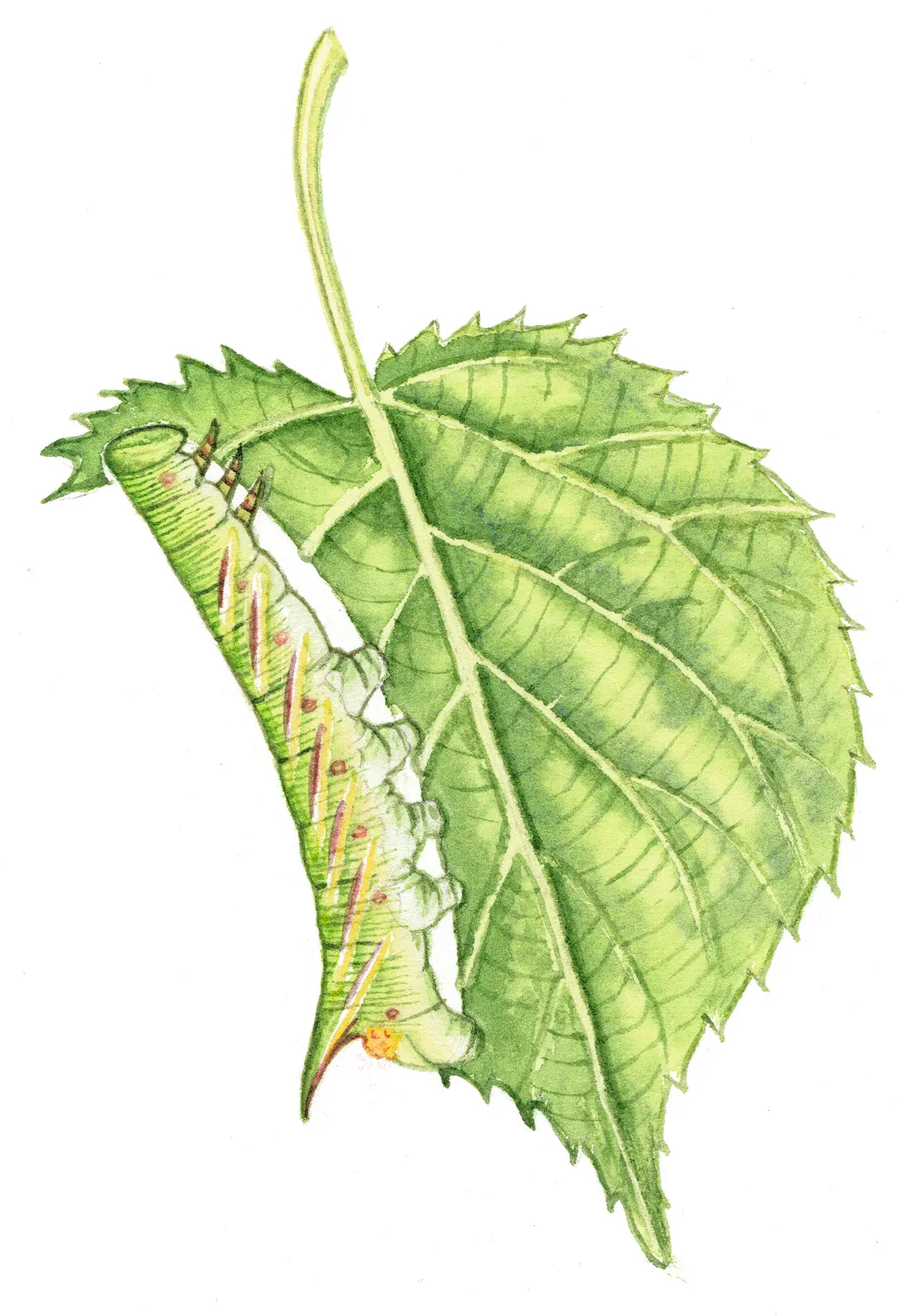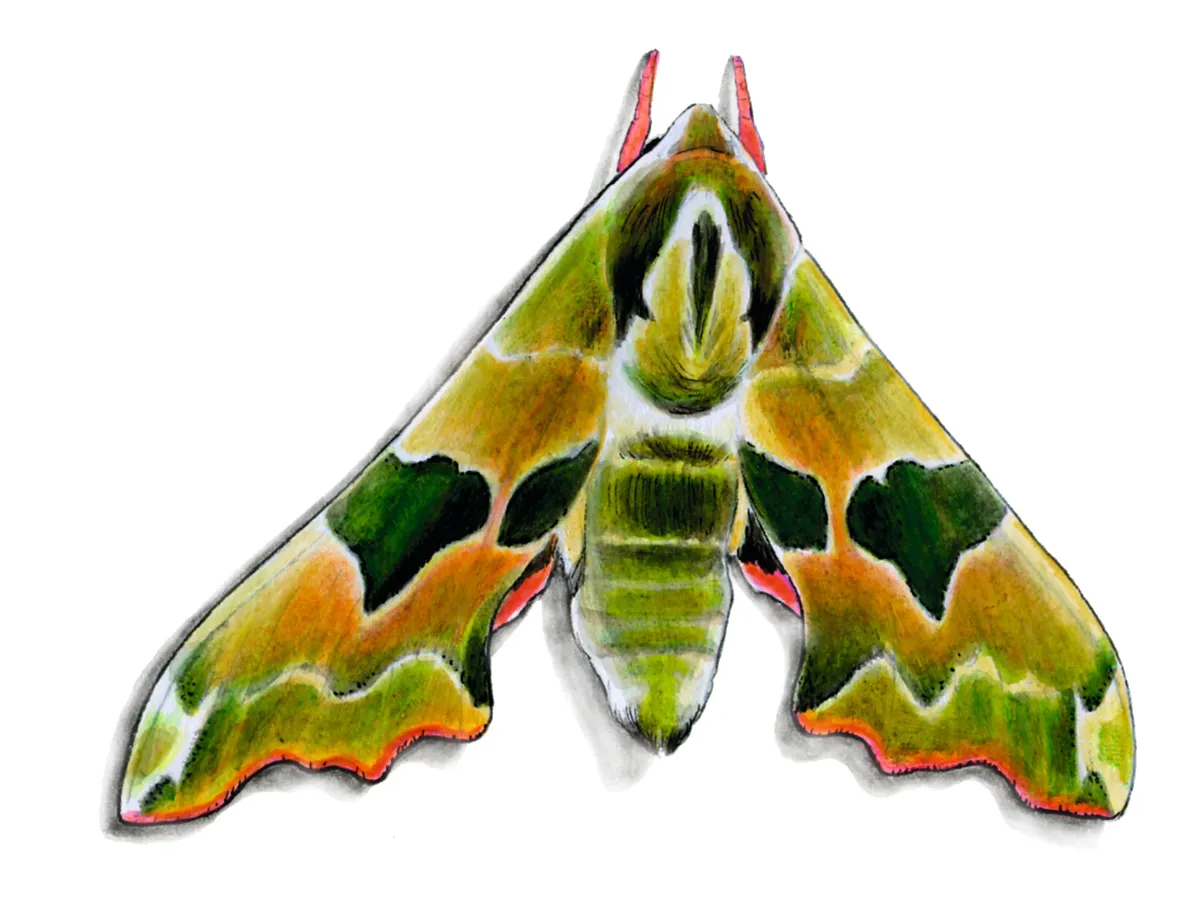Your garden may be playing host to an army of fascinating leaf-eaters – including all sorts of caterpillars and insect larvae.
One of the most absorbing activities for any wildlife gardener is looking for newly nibbled holes in the leaves of your plants. Don’t be alarmed: holes are the best evidence of a thriving garden ecosystem, and the fun part is working out what made them. The chances are it will be either caterpillars, sawfly larvae or beetle grubs.
As well as providing food for your garden birds and hedgehogs, insect larvae are fascinating in themselves and, of course, they will later develop into adults. The three groups can be hard to tell apart, but are easily distinguished by examining their legs – a good guide will help.
Most of the caterpillars you’ll find will be those of moths or butterflies. Sawflies are common, too – their larvae feed in groups clustered on the edges of leaves and, when disturbed, some flick into an S-shape to deter predators.
Keep an eye on your larvae’s progress. Caterpillars have phenomenal growth rates, increasing in weight by 10,000 times in less than a month before pupating.
How to encourage caterpillars to your garden
Most butterflies and moths will spend their entire lives in a small area if it contains the right foodplants – so good planting is the best way to boost numbers.
There are 59 species of butterfly regularly found in the UK, which are either resident or regular migrants. In contrast, there are about 2,500 species of moth, several hundred of which can be seen in gardens. Many species are adaptable and will lay their eggs on a wide range of herbaceous plants. Nettles, docks and grasses are good, as are native shrubs, such as blackthorn, dogwood, hawthorn and spindle.
A hedge with a mix of native species will attract a wide range of moths, as will trees such as willow (food for caterpillars of 90 species of moth), birch (75) and poplar (32). Night-scented flowers, such as honeysuckle, evening primrose and jasmine, provide nectar for moths, too.
How to identify butterfly and moth caterpillars
Large white butterfly caterpillar (Pieris brassicae)
These caterpillars are only 45mm long and fatten up on cabbages, lettuces and nasturtiums within four weeks – as a result, they are considered a pest by many farmers and gardeners. In fact, adults are referred to as cabbage white butterflies. The caterpillars accumulate large concentrations of mustard oil from their diet and their bright, spotted body warns would-be predators of their foul taste.
Large white caterpillars can be seen from June to September. Adults are active between April and October, when they lay bright yellow eggs on the underside of the leaves of plants that the caterpillars feed on.
Cabbage white, or large white, butterflies are the largest of the three white butterflies in Britain.
Small tortoiseshell butterfly caterpillar (Aglais urticae)
Green eggs are laid in clusters on stinging nettles and the spiny, black-and-yellow caterpillars then live together, building a communal silk web and feeding on nearby leaves in order to grow to 30mm long. As they grow, they move to new plants and build new webs, leaving old ones full of shed skins.
Living together benefits the caterpillars because they can undulate their bodies in unison, appearing as one large organism, in an attempt to scare away predators. Eventually, individual caterpillars crawl away separately to pupate.
Small tortoiseshell caterpillars can be seen from May to June, with adults potentially being active all year. The adult butterfly appears throughout the UK, but its numbers are lately decreasing.
Comma butterfly caterpillar (Polygonia c-album)
These caterpillars grow to 35mm and reside on hops and stinging nettles. The burnt-orange-and-black hatchlings develop a white ‘saddle’ mark which resembles a bird dropping, thus deterring predators.
When small, it feeds on the undersides of leaves, but as it grows it feeds on the upper side. The caterpillars change colour quite a lot throughout their larval stage, but older caterpillars are the most distinctive.
Comma caterpillars are seen from late April to mid-September, but the butterflies are active year-round. In the 1800s it suffered a marked decline, likely due to a reduction in the planting of its favoured food, hop, but it has since experienced a resurgence.
Cinnabar moth caterpillar (Tyria jacobaeae)
The feeding patterns of this caterpillar are distinctive, giving a shredded appearance to the common ragwort which they feed upon. Growing to 28mm, these black-and-yellow caterpillars are very distinctive and easy to identify as they look like they’re wearing a rugby shirt.
The caterpillars feed in groups, mainly in the daytime, from July to early September. When the leaves of the plant are gone, they sometimes resort to cannibalism. They pupate underground, instead of in a chrysalis on a tree like other caterpillars.
Adults fly from May to early August. ‘Boom and bust’ population fluctuations locally.
Buff-tip moth caterpillar (Phalera bucephala)
Feeding on oak leaves, this black-and-yellow caterpillar grows to 70mm long and has hairs which cause irritation to humans and do a good job of warding off predators.
After hatching from the egg cluster, larvae feed together, moving off alone when they grow to larger sizes. The caterpillars are fully grown in 30 days and pupate underground during winter.
Buff-tip moth caterpillars are found between July and early October. Adults are active from late May to July, and their markings are designed to look as if the moth has a broken wing.
Pale tussock moth caterpillar (Calliteara pudibunda)

The caterpillars can grow up to 45mm and reach full size in about two months. They are found on various broadleaved trees and shrubs, including birch and hops, and are colloquially known as ‘hop dog.’ The bristles on the caterpillar’s body are known for causing skin irritation to humans.
Pale tussock moth caterpillars can be seen from late June to early October, but in the autumn they are more likely to be seen as they crawl about looking for somewhere to pupate. Adults fly between July and August and are a handsome grey moth with comb-like antennae.
Sycamore moth caterpillar (Acronicta aceris)

Find these on sycamore, horse chestnut, London plane, and cultivated and field maples. They are an urban species and very distinctive with their bright-orange hairs and black-and-white diamond patterns along the back. These caterpillars, which grow up to 40mm long, occasionally drop from the trees they feed on and land on walkers.
Sycamore moth caterpillars are found from July to September. They pupate on the ground in the winter, in debris like bark and leaf litter. The adults are active from mid-June to early August.
Vapourer moth caterpillar (Orgyia antiqua)
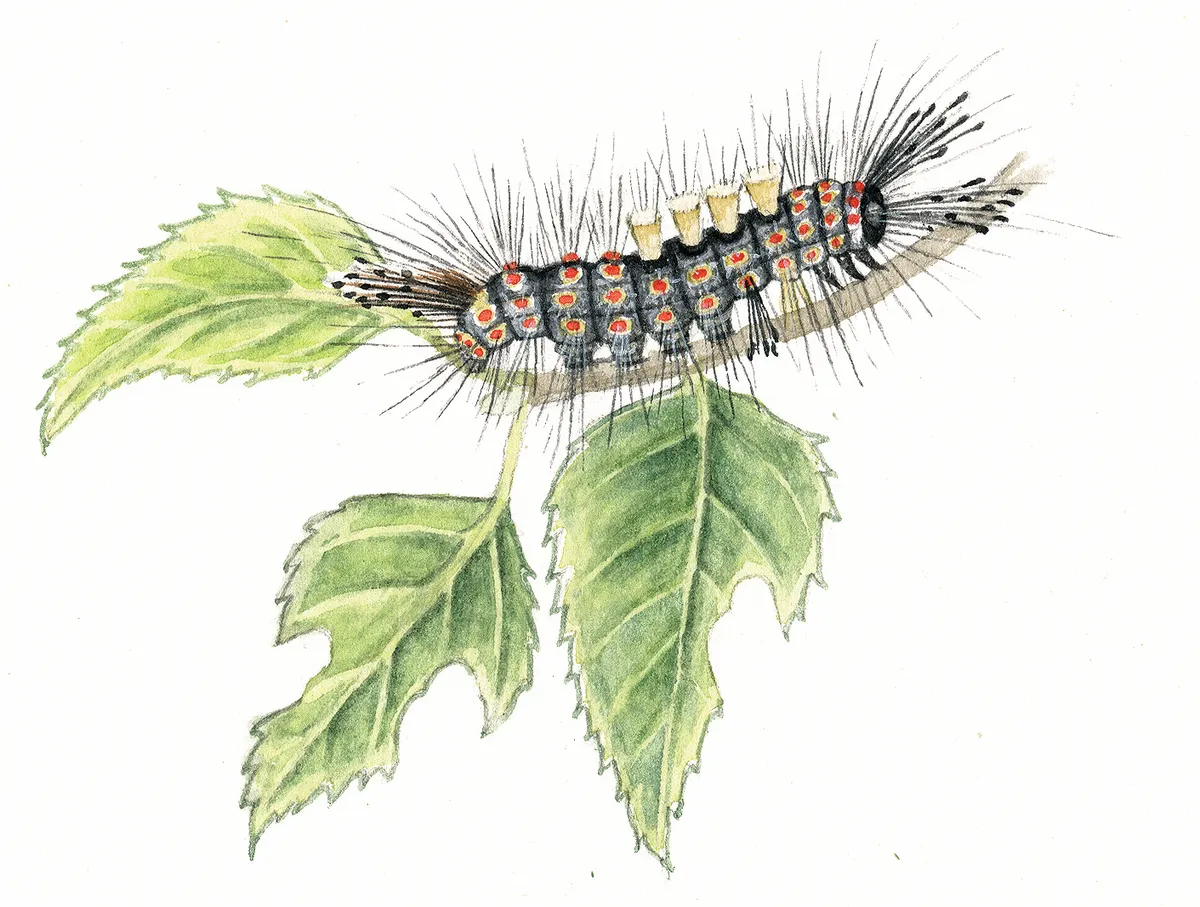
A funky-looking, highly recognisable moth covered in bizarre tufts which make them distasteful to predators. There is some evidence of a distinct all-yellow tufted Cornish variation, however most have a grey body with red spots.
The vapourer life-cycle is strange among moths. Flightless female moths look like large, hairy fleas – because they don’t fly, they are not held back by the weight of the great many eggs in their bulbous abdomens. After they mate, they lay eggs on the side of their cocoon and the eggs hatch at different times over the course of eight weeks.
Look for them on native or cultivated trees or shrubs from May to early September. Adults fly from July to October in the south and September to October in the north.
Knot grass moth caterpillar (Acronicta rumicis)
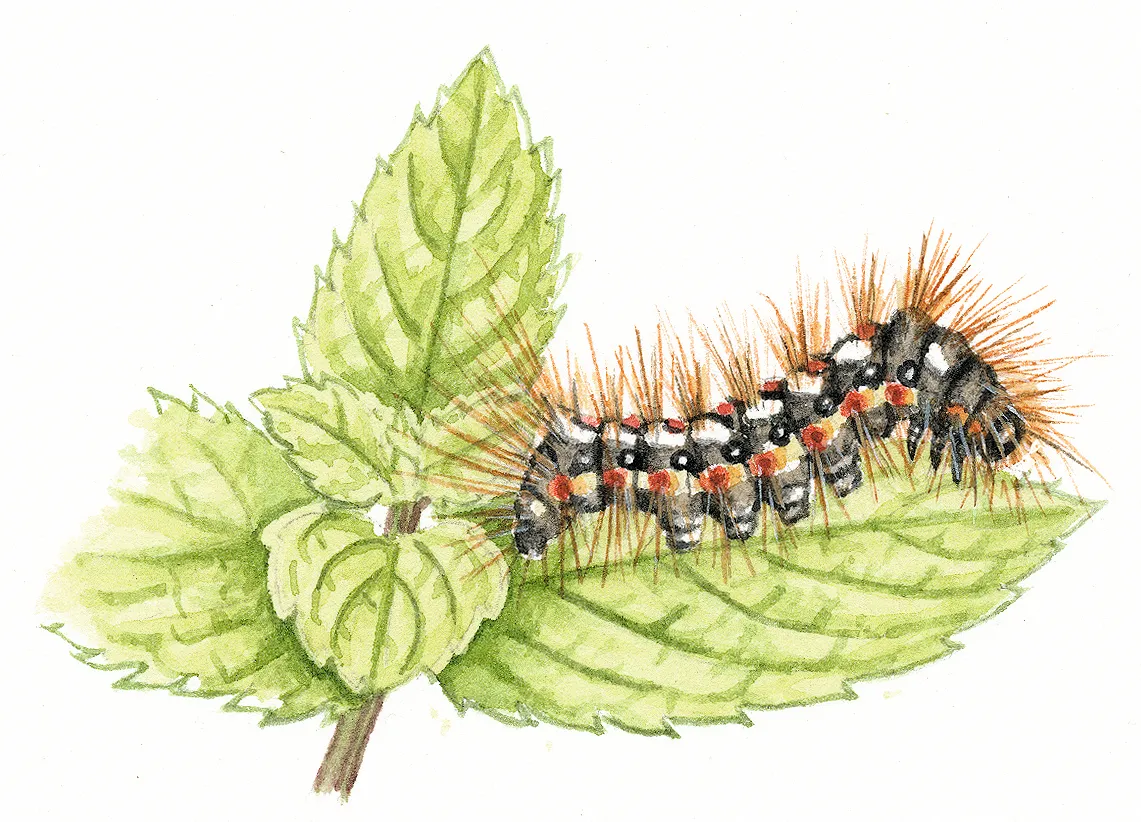
The caterpillars reach 40mm in length over the course of thirty days, feeding on sorrel, broadleaved dock, mint and bramble. The species is widespread, but there are two generations per year in southern Britain. They pupate during wintertime in chrysalises among ground cover and dead leaves.
Knot grass moth caterpillars can be found from June to October. The mottled black-and-white adults fly from May to June and from August to early September.
Grey dagger moth caterpillar (Acronicta psi)

After emerging from eggs which take only a week to hatch, the caterpillars grow to 40mm over the course of about thirty days. They feed in broadleaved trees and shrubs, such as hawthorn, apple and birch. Their yellow stripe serves as camouflage on plant stems.
The caterpillars can feed with a ‘cookie-cutter’ method, taking circular bites that only go halfway through the leaf. The chrysalises are a shiny reddish-brown and overwinter in the bark of trees, or in leaf litter.
Grey dagger moth caterpillars can be found from July to early October. The whitish adults are active from mid-May to August.
Dot moth caterpillar (Melanchra persicariae)

In less than a month, these caterpillars grow to 45mm. Found feeding on a wide range of herbs and shrubs, you can recognise them by their brown or green colouring, always with ‘go-faster’ chevrons along the back which create a sort of optical illusion. They also have three distinctive pale lines behind the head, one extending the length of the caterpillars back, and one either side of this.
Dot moth caterpillars are found from August to October, after which they pupate in a dark-brown cocoon underground. The dark blue-black adults have a white dot on each wing and fly from late June to August.
Lime hawk-moth caterpillar (Mimas tiliae)
Large caterpillars, up to 70mm, with a distinctive blue tail horn. You can find them mainly on lime, particularly in urban areas, but also on birch and alder. Look for bright-green bodies which turn a dark greyish-purple when they are full-grown and ready to pupate. The chrysalis is spun in dead leaves, either on the ground or where they accumulate between the branches of trees.
Lime hawk-moth caterpillars can be seen from late June to mid-September. 80mm adults are striking, subtly green and pink, and fly from May to early June.
Main image: Caterpillar of a comma butterfly. © Getty

